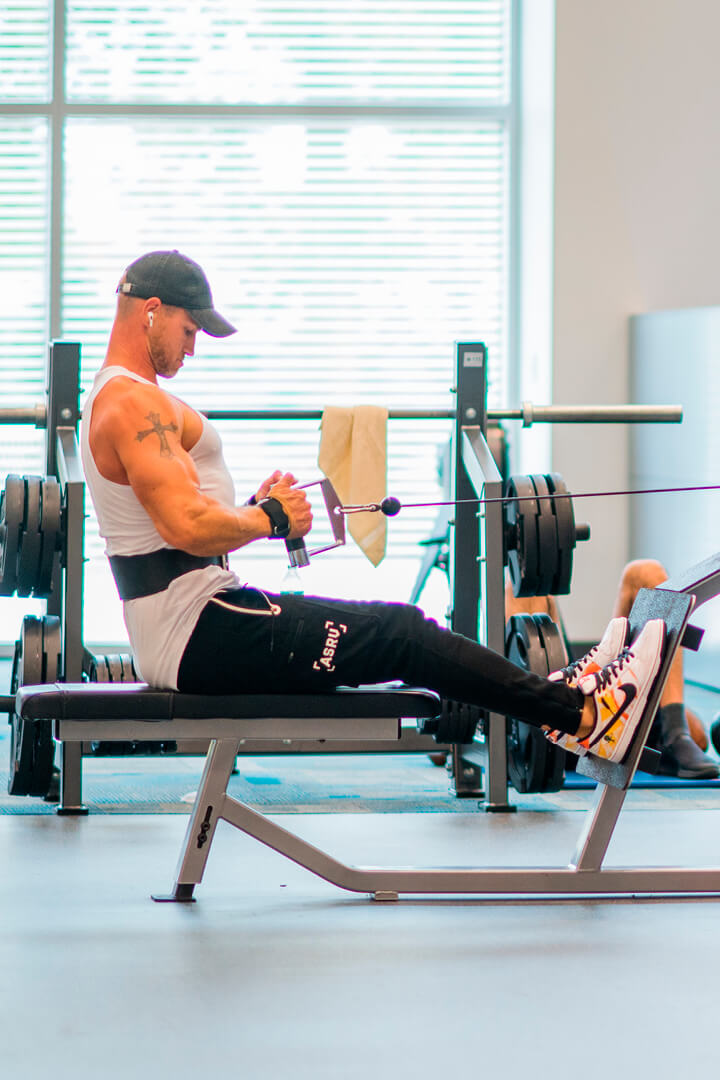![]() You’ve been on Instagram or Facebook and seen people post infographics such as The 30-day Squat Challenge or The Ultimate Chest Workout Guide and thought “let’s give this a try.” You begin one, see some changes, but after a while it feels like nothing’s happening. Why is that? How do you get more results? The answer is progressive overload. What does that mean? It means you progressively make the exercise more challenging workout after workout to illicit a
You’ve been on Instagram or Facebook and seen people post infographics such as The 30-day Squat Challenge or The Ultimate Chest Workout Guide and thought “let’s give this a try.” You begin one, see some changes, but after a while it feels like nothing’s happening. Why is that? How do you get more results? The answer is progressive overload. What does that mean? It means you progressively make the exercise more challenging workout after workout to illicit a
training response. Okay, but how do you do that? Stick around for the rest of the article and I’ll break it down for you.
Most workout templates have a prescribed exercise set and repetition selection. For example, three sets of ten reps. If you keep hammering out the same bicep curls, bench press, or leg extension using this format with the same weight, your body will quickly adapt and those initial changes you were thrilled to see will quickly stop coming. You need to challenge your body or it will have no reason to adapt. That desirable, toned, or athletic look you might have initially sought after by starting an exercise program won’t come if you don’t push for it. Our bodies need to be shocked into changing (they are lazy physiologically speaking) and to do that you need to change the perimeters of your workout. There are three main ways to do this: changing the load (weight), changing the volume (reps), or changing the rest time between sets.
Changing the load is pretty straightforward and the most common way. Load means weight lifted so to change the load you just add more weight. Put more weight on the barbell, pick up a heavier dumbbell, or go to the next higher setting on the machine. Eventually though, just adding weight to the bar becomes an issue. Also, if you do not have access to weights you can’t really add weight. So, what other techniques can you use to create progressive overload?
You can increase the volume. Simply put, do more work. You can either increase the amount of reps you do per set or do more sets. Instead of 3 sets of 10 reps, do 3 sets of 12 reps or 4 sets of 10 reps. You could also keep everything the same but just go more often. Instead of lifting weights twice a week, find time to make it to the gym a third day. As long as you are doing more work than you did previously you are pushing the training effect and your body will be forced to adapt.
The third main way to progressively overload is probably the least considered but it can be a good option if you are unable to do the previous two. You can shorten the rest times you take between sets. Instead of taking 2 minutes to rest, chop it down to 90 second or 1 minute. As long as you feel mostly rested, you can make your workout more intense by not giving yourself as much time to recover. This can also be great if you do not have a lot of time to spend working out.
Progressive overload is the only true way to push the training effect and make your body adapt into the lean, mean fighting machine you want it to become. Using these simple tricks, you can bust out of beginner workouts and start becoming a true workout warrior.
Try one to start and mix and match all three as you see fit.





